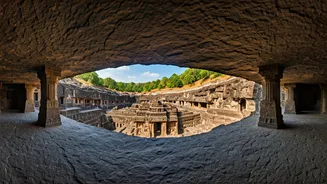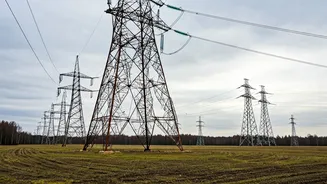Election Overview
Tomorrow's by-elections will impact eight assembly constituencies across six states and one Union Territory. The involved states are Rajasthan, Jharkhand,
Telangana, Punjab, Mizoram, Odisha, and Jammu and Kashmir. The outcome will be significant because it mirrors the public's viewpoint on governance and local political dynamics. The constituencies, each with its unique political landscape, will draw voters. This presents a snapshot of the changing political climate across various regions. Election outcomes are anticipated as indicators of potential shifts in power and changes in the local governance approach. Each constituency will serve as a reflection of its unique community's concerns and priorities.
States and Constituencies
The by-elections include constituencies from several Indian states and one Union Territory. Rajasthan, Jharkhand, Telangana, Punjab, Mizoram, Odisha, and Jammu and Kashmir are all participating. Within each state, the specific assembly constituencies will experience the election process. The focus on each seat reflects the local conditions, the historical voting patterns, and the current political situation. These areas' distinct political backgrounds and voter demographics will provide insight. Each election result will contribute to a wider picture, revealing the national public’s views. This makes the by-elections important in understanding the state of political affairs. The electorate’s choices will likely shape the state’s political trajectory.
Significance of Elections
By-elections are pivotal because they allow voters to influence the direction of their government. They serve as a measure of the effectiveness and popularity of existing policies. The results can reflect citizens' satisfaction or dissatisfaction with the current ruling party or government. Such elections often act as bellwethers, foreshadowing trends for wider elections. Voter turnout and the winning candidates will contribute to the narrative. They can trigger shifts in political alliances and strategies. Furthermore, these elections are a direct exercise in democracy. Therefore, the outcomes are particularly relevant because they directly reflect the desires and concerns of the electorate. These elections can prompt parties to adjust their actions. This process allows the political system to stay responsive to public will.
Expected Outcomes and Impact
The anticipated results of these by-elections have implications for each participating state. The outcome could lead to changes in the composition of state assemblies, impacting legislative dynamics. If the elections cause significant shifts in the balance of power, it might require coalition adjustments. The election’s results could influence upcoming elections. Political parties will observe the results carefully to adjust their strategies. They will focus on issues that voters prioritize. The outcome may also set the tone for public debate. The by-elections give political parties an idea of the public mood, affecting their future decisions. Changes in state governance depend upon how each election unfolds.















